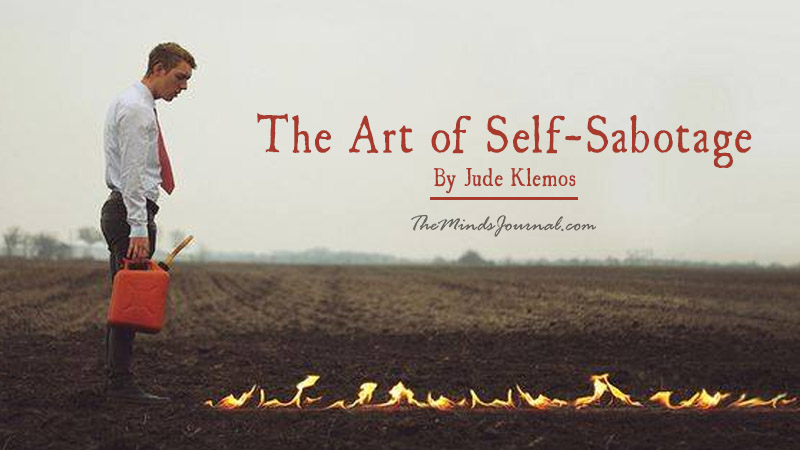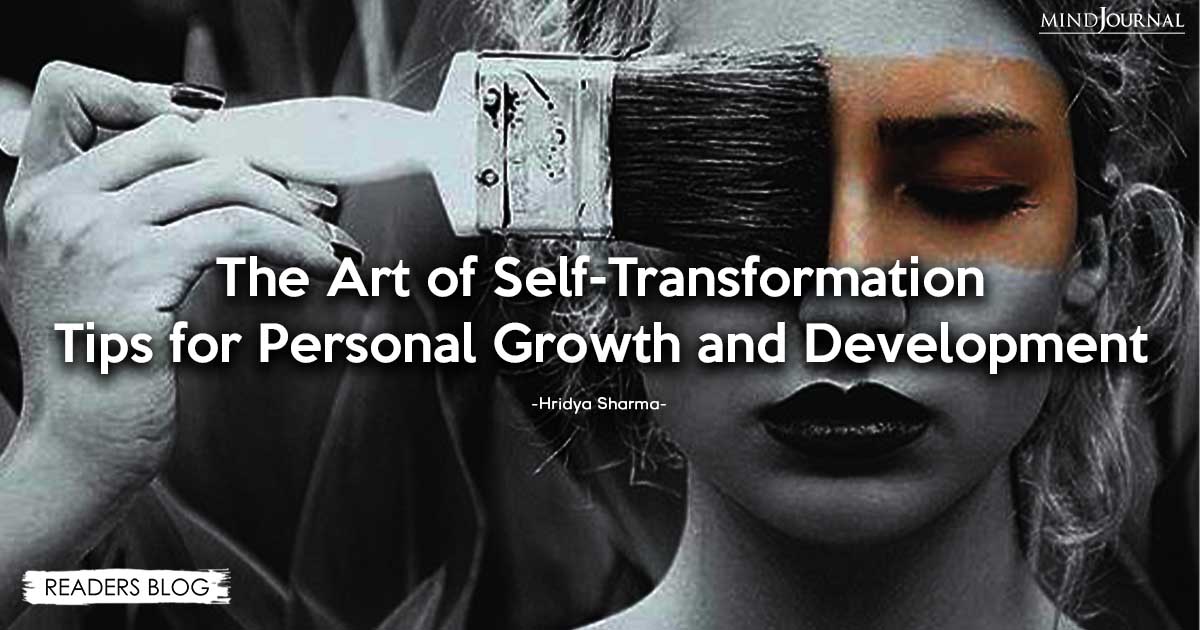Self-sabotage is when we say we want something and then go about making sure it doesn’t happen. ~ Alyce P. Cornyn-Selby
Self-sabotage is a subsidiary of the bigger umbrella of ‘self-harm’. When you say self-harm many automatically think of things like suicidal ideation, cutting or drug/alcohol addiction, but that’s only part of the story.
FIVE METHODS OF SELF-SABOTAGE
-
Avoidance
-
Create Conflict
-
Abandonment
-
Half-Assedry
-
Addiction
Avoidance
Also known as ‘procrastination’, avoidance is the typical ostrich with its head in the sand approach. “If I ignore it, it will fix itself.” While some things will indeed ‘work themselves out’, they NEVER do that without some sort of energetic effort from us! We cannot bury our heads in the sand and pretend things better, nor can we continue to put things off to a ‘tomorrow’ that never comes. We MUST step up and make an energetic effort, no matter how small, towards the solution. This and only this will bring about a desired result.
The important thing to remember about avoidance is that not making a decision is -in fact- making a decision. You are empowered at all times. While it might feel like you are powerless, you are really feeling the paralysis of your own making. This paralysis stems from negative self-talk: “I’m not good enough”; “It doesn’t matter”; “Its too late”. These are all justifications to not take action. Even something as simple as “I’ll start my diet on Monday” is avoidance. These need to act as your red flags that you are in self-sabotaging mode and for you to turn that thinking around!
Create Conflict
Most often associated with the term self-sabotage, creating conflict presents in a wide assortment of ways. The basic premise though, is that where there is no real problem, a problem is created, evidenced by lashing out, imagining problems, blowing little things up into big issues and talking yourself out of something by saying it is ‘too good to be true’.
I also call this the ‘escape hatch’. These are justifications that something great, really isn’t that great. In personal relationships, where we feel the most vulnerable, we look for ways to justify our need to ‘stay safe’ and not reveal anything more than we already have. In essence, we are just looking for a way out. You’ll note these thoughts often come up just when we are beginning to develop deeper feelings. It may even happen several times in a relationship if you manage to pursue past the first escape hatch! Your red flag here to indicate self-sabotage is that it comes up just as you are beginning to open yourself up to a deeper level.
Abandonment
On the heels of the escape hatch is the actual escape. Many call this ‘running away’, but here’s the thing. Most people ‘run away’ because they have this old hurt they are holding onto. This old hurt is often associated with being abandoned by someone they loved and trusted. So, as a method of self-protection, they develop a ‘survival skill’ that allows them to leave before they are left behind. What people fail to realize, however, is that by doing so you are actually abandoning another, thus being the perpetrator of the very behavior that caused you so much pain. You have now inflicted that same pain onto someone else, that did not warrant such treatment…just as YOU did not warrant being abandoned earlier. Do you really want to be part of that cycle?
Important to note is that it is never wise to stay in a relationship (romantic or pleutonic) that doesn’t serve you. That’s called responsible relationshipping and it is done out of love for self. When we talk about abandonment, we are talking about leaving to avoid intimacy, and it is done out of fear.
But relationships aren’t the only place we can abandon.
Ever work really hard on a goal, achieve some success and then suddenly ABANDON it? Yup. Exercise is a very typical one, weight loss is another and fiscal responsibility is yet another. You make a committement, you set a strategy, the strategy works and you begin to see some desired results!! YAY!! Then you begin to talk yourself into slacking off a bit, “I’ve been so good, I deserve this…”, and the “this” you are referencing is a day of binge eating, or spending or not exercising. These are not rewards! This is your self-sabotage at work! Rewards would be something like putting more money in savings, a different type of workout to change it up, or perhaps a more luxurious healthy meal. Rewards are things that propel you forward, NOT set you back!
Half-Assedry
Also known as passive-aggressiveness…the art of doing just enough to look like you tried, but never really giving it your all. The key component to success is go big or go home. You need be all in to meet your goals. To not go ‘all in’, might as well be not in at all. Half-assedry allows you a ‘release of responsibility’. You can justify yourself by saying you tried but it didn’t work and throw your hands up. In fact, you didn’t try for success at all. To drive half way to your destination is not trying…it is trying to fail. If you don’t want to do something, make THAT choice. Don’t be passive-aggressive about it, by saying you ‘tried’.
Make a decision about what you want and then pursue making it happen (the very opposite of the opening quote) by going ALL IN on it. Don’t pretend you want it and then half-ass it. If you don’t want it, be honest with yourself about that upfront because all you will do is give yourself more ammunition for your future self-sabotaging self to use against you.
Addiction
While drug and alcohol are the most recognizable addictions, they are far from the only ones. Anything can be an addiction if you are doing it INSTEAD of dealing with your underlying feelings. Here are just a few: shopping/spending money, sex, relationships, marijuana, prescribed medication, exercise, sleeping, any eating disorder, depression, working, sugar, socializing.
You might be questioning how some of these things can be an addiction. IF you are doing them INSTEAD of dealing with underlying feelings in order to escape the discomfort of those feelings, it is an addiction. IF you are using them in order to more effectively deal with the underlying feelings, then it is not. This means, that you will actually work yourself past the point of needing the particular thing. Addiction is one form of an escape hatch, one could say, except that what you are trying to escape is yourself.
How can relationships be addictive? This is what the mental health community calls being co-dependent. However, I say, call a spade a spade. You are not ‘co’ dependent, you are dependent on a person. That person doesn’t even have to be dependent on a substance, although quite often they are, but there is always some sort of drama in the relationship that the ‘co-dependent’ person is using to avoid dealing with their own fear of being alone. So, as Iyanla VanZant would say, call a thing a thing. A person addicted to relationships is an addict.
This goes for those who take certain prescription drugs too. Just because you have a prescription in your name and you get it from a reputable doctor does not mean you aren’t an addict.
Written by Jude Klemos
Self-Sabotage Antidote
Please email me, with ‘self-sabotage anti-dote’ in the subject line at judyklemos@gmail.com to receive your self-sabotage antidote!
Find me at The Sentient Soul








Leave a Reply
You must be logged in to post a comment.